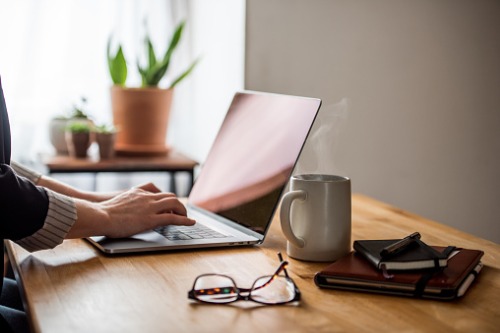
A health and wellness specialist shares a few simple tips to reduce the risk of injury while working from home

Working from home has become and will remain the norm for plenty of people, but this has unintentionally caused a spike in injuries and trips to the physio.
While some people have invested in their work-from-home setup, I’ve treated a lot of patients who are working from their laptops while sitting on the couch, not using a table, or even working on a tablet in bed!
Read more: Beware the dangers of the 'twindemic'
Our bodies don’t like this – sitting at a desk in a traditional office setting is already far from ideal, but in most cases the chairs, desk heights and other aspects have been optimised as much as possible. Without these elements, we accelerate the risk of injury to our bodies. Here are some of the key injuries poor home office design can create:
Luckily, there are a few simple tips to reduce the risk of work-related injuries to your body.
First, try to make a designated space to work from at home if possible. This avoids the need to constantly pack up and unpack your work materials – which can lead to a rushed setup and skipping basic steps to make sure you’re ready for that 8 a.m. Zoom meeting! It also provides some physical and mental separation between your work and home life and breaks the monotony that can build up.
Second, invest in the right computer equipment and accessories. Ideally, this is something your employer can provide or assist with, particularly if working remotely will become a permanent aspect of your role. Consider hooking an external keyboard up to your laptop so you can raise the laptop or external screen to the optimal height (top of the screen at your eye level, at least 20 inches or 51 centimetres away).
A separate mouse and mouse pad also allows you to hold your wrist, hand and shoulder at a more comfortable angle as you work and helps you avoid rounding your shoulders too much.
As a rule of thumb, your desk should be at the same height as your elbows, giving you a 90-degree angle. Too high, and you’ll hike your shoulders up to your ears, leading to neck and shoulder pain. Too low, and you’ll slouch down to reach your keyboard, putting pressure on your spinal discs and leading to a ‘hunchback’ posture.
Read more: Rushing back to the office? Maybe it's time to slow down
Don’t forget to put your foot down. Feet should be flat on the floor and your back against the support of the chair. If your feet don’t touch the floor, try adjusting the seat height or getting a small step to place them on.
A back cushion also goes a long way. I usually advise people to use an adjustable, ergonomic chair with a lumbar support cushion, but failing that a regular couch cushion is better than nothing. You want to keep your lower back supported as you work, maintaining the natural inward curve at the base of your spine. This is your back’s ‘suspension’, its most shock absorbent position and maintaining it reduces the load on your lower back. Lumbar support cushions are likely available at your local physio, and they can recommend the best option to suit you.
Last but not least, walk it off. It’s so important to take frequent standing and walking breaks whether you’re working from home or anywhere else, at least every 45 minutes to an hour. This provides your back and joints much-needed movement, gives you an opportunity to clear your mind, and your eyes get a break from the screen at the same time.
When you’re busy, hours can go by before you realise your body has been in poor position or you haven’t moved all day. Your body is yours for life, so it’s important to take these simple steps to keep it feeling its best and avoid any long-term issues.
Aoife Casey is owner and clinical director of Your Body Physio & Pilates in Sydney’s Northern Beaches.